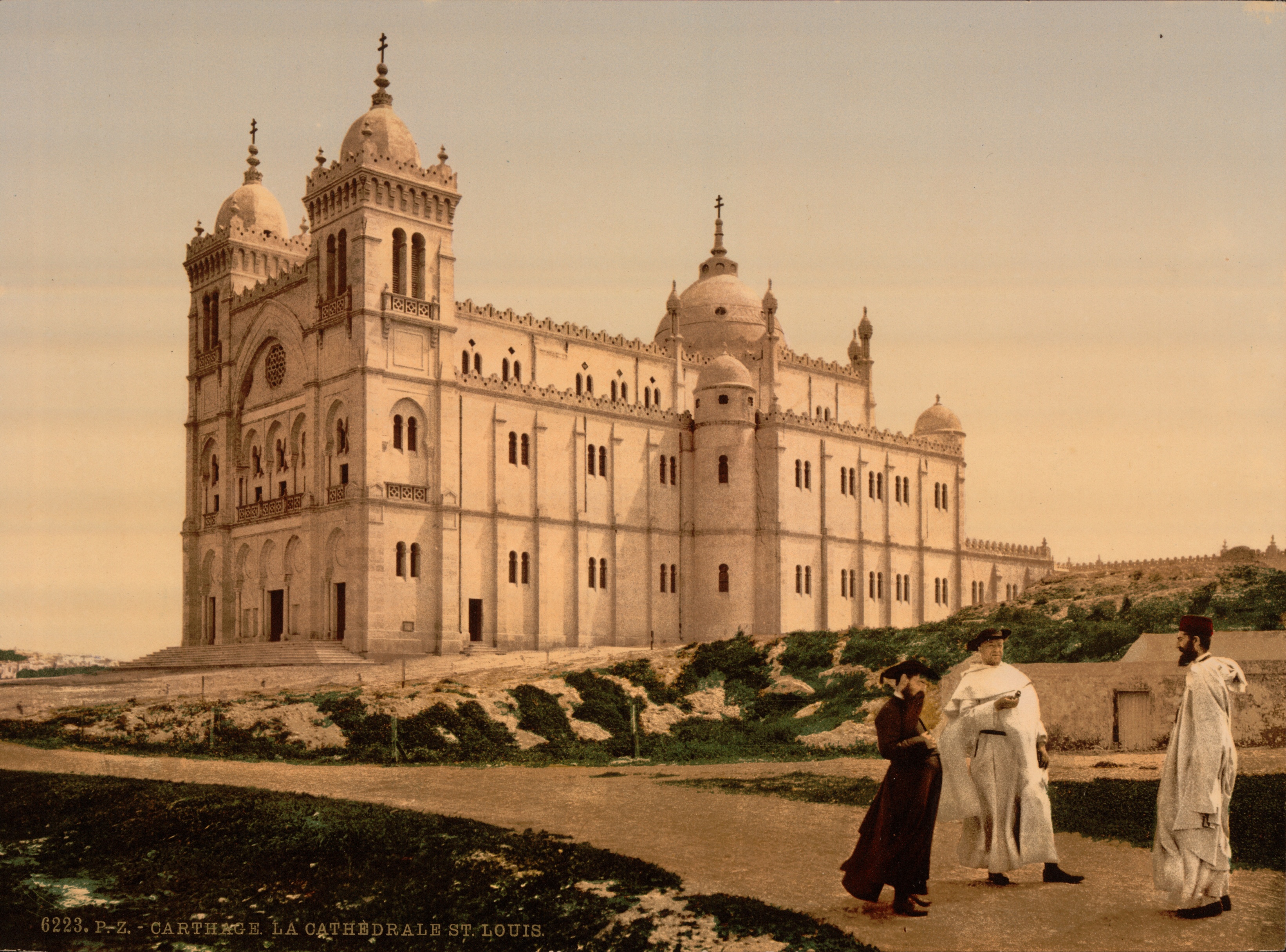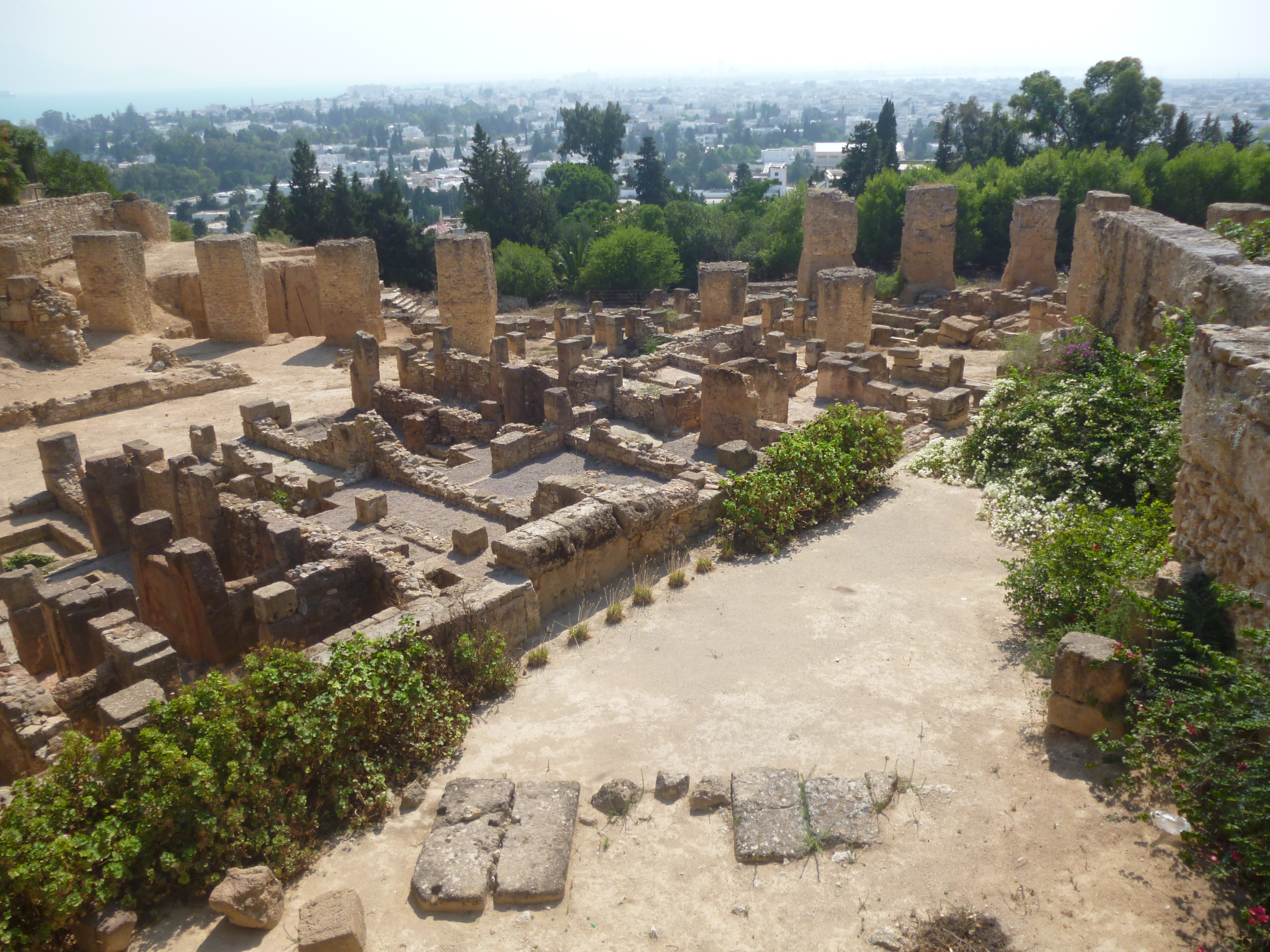Carthage (municipality) on:
[Wikipedia]
[Google]
[Amazon]
Carthage ( ; ) is a commune in Tunis Governorate,


 Roman Carthage was destroyed following the Muslim invasion of 698, and it remained under the control of the Arabs and later Ottoman rule for more than a thousand years (being replaced in the function of regional capital by the Medina of Tunis), until the establishment of the
Roman Carthage was destroyed following the Muslim invasion of 698, and it remained under the control of the Arabs and later Ottoman rule for more than a thousand years (being replaced in the function of regional capital by the Medina of Tunis), until the establishment of the  Construction on the Tunis–Carthage International Airport, which was fully funded by France, began in 1944, and in 1948 the airport become the main hub for
Construction on the Tunis–Carthage International Airport, which was fully funded by France, began in 1944, and in 1948 the airport become the main hub for
Archive
. The office of mayor was held by Chedli Klibi from 1963 to 1990, by Fouad Mebazaa from 1995 to 1998 and by Sami Tarzi from 2003 to 2011, and by Azedine Beschaouch from 2011.
The monumental ''Malik ibn Anas'' mosque
(also ''El Abidine '' mosque; ), built on an area of three hectares on ''Odéon'' hill, was inaugurated in 2003.« La mosquée El Abidine, Carthage », Architecture méditerranéenne, hors-série « La Tunisie moderne : deux décennies de transformations », novembre 2007, p. 51-57
The office of mayor was held by Chedli Klibi from 1963 to 1990, by Fouad Mebazaa from 1995 to 1998 and by Sami Tarzi from 2003 to 2011, and by Azedine Beschaouch from 2011.
The monumental ''Malik ibn Anas'' mosque
(also ''El Abidine '' mosque; ), built on an area of three hectares on ''Odéon'' hill, was inaugurated in 2003.« La mosquée El Abidine, Carthage », Architecture méditerranéenne, hors-série « La Tunisie moderne : deux décennies de transformations », novembre 2007, p. 51-57
Tunisia
Tunisia, officially the Republic of Tunisia, is a country in the Maghreb region of North Africa. It is bordered by Algeria to the west and southwest, Libya to the southeast, and the Mediterranean Sea to the north and east. Tunisia also shares m ...
. It is named for, and includes in its area, the archaeological site
An archaeological site is a place (or group of physical sites) in which evidence of past activity is preserved (either prehistoric or recorded history, historic or contemporary), and which has been, or may be, investigated using the discipline ...
of Carthage
Carthage was an ancient city in Northern Africa, on the eastern side of the Lake of Tunis in what is now Tunisia. Carthage was one of the most important trading hubs of the Ancient Mediterranean and one of the most affluent cities of the classic ...
.
Established in 1919, Carthage is some 15 km to the east-northeast of Tunis
Tunis (, ') is the capital city, capital and largest city of Tunisia. The greater metropolitan area of Tunis, often referred to as "Grand Tunis", has about 2,700,000 inhabitants. , it is the third-largest city in the Maghreb region (after Casabl ...
, situated between the towns of Sidi Bou Said
Sidi Bou Said ( ') is a town in northern Tunisia located about 20 km northeast from the capital, Tunis.
Named after a religious figure who lived there, Abu Said al-Baji, it was previously called Jbel el-Menar. The town itself is a tourist ...
to the north and Le Kram to the south. It is reached from Tunis by the R23 road via La Goulette
La Goulette (, ), in Arabic Halq al-Wadi ( '), is a municipality and the port of Tunis, Tunisia.
La Goulette is located at around on a sandbar between Lake of Tunis, Lake Tūnis and the Gulf of Tunis. The port, located 12km east of Tunis, is th ...
, or by the N9 road via Tunis–Carthage International Airport.
The population as of January 2013 was estimated at 21,277, mostly attracting the more wealthy residents.
The Carthage Palace (the Tunisian presidential palace) is located on the coast.
Carthage has six train stations of the TGM line between Le Kram and Sidi Bou Said:
Carthage Salammbo (named for the ancient children's cemetery where it stands), Carthage Byrsa (named for Byrsa hill), Carthage Dermech (''Dermèche''), Carthage Hannibal (named for Hannibal
Hannibal (; ; 247 – between 183 and 181 BC) was a Punic people, Carthaginian general and statesman who commanded the forces of Ancient Carthage, Carthage in their battle against the Roman Republic during the Second Punic War.
Hannibal's fat ...
), Carthage Présidence (named for the Presidential Palace
A presidential palace is the official residence of the president in some countries. Some presidential palaces were once the official residences to monarchs in former monarchies that were preserved during those states' transition into republics. ...
) and Carthage Amilcar (named for Hamilcar).
History


 Roman Carthage was destroyed following the Muslim invasion of 698, and it remained under the control of the Arabs and later Ottoman rule for more than a thousand years (being replaced in the function of regional capital by the Medina of Tunis), until the establishment of the
Roman Carthage was destroyed following the Muslim invasion of 698, and it remained under the control of the Arabs and later Ottoman rule for more than a thousand years (being replaced in the function of regional capital by the Medina of Tunis), until the establishment of the French protectorate of Tunisia
The French protectorate of Tunisia (; '), officially the Regency of Tunis () and commonly referred to as simply French Tunisia, was established in 1881, during the French colonial empire era, and lasted until Tunisian independence in 1956.
T ...
in 1881.
The cathedral of St. Louis of Carthage was built on Byrsa hill in 1884.
In 1885, Pope Leo XIII
Pope Leo XIII (; born Gioacchino Vincenzo Raffaele Luigi Pecci; 2March 181020July 1903) was head of the Catholic Church from 20 February 1878 until his death in July 1903. He had the fourth-longest reign of any pope, behind those of Peter the Ap ...
acknowledged the revived Archdiocese of Carthage
The Archdiocese of Carthage is a Latin Catholic titular see originally established as a diocese in Carthage, Roman Empire, in the 2nd century. Agrippinus was the first named bishop, appointed around 230 AD.
The diocese, in its earlier form, ...
as the primatial see of Africa
Africa is the world's second-largest and second-most populous continent after Asia. At about 30.3 million km2 (11.7 million square miles) including adjacent islands, it covers 20% of Earth's land area and 6% of its total surfac ...
and Charles Lavigerie as primate. European-style villas were built along the beach beginning in 1906; one such villa was chosen by Habib Bourguiba
Habib Bourguiba (3 August 19036 April 2000) was a Tunisian politician and statesman who served as the Head of Government of Tunisia, prime minister of the Kingdom of Tunisia from 1956 to 1957, and then as the first president of Tunisia from 1 ...
as the presidential palace in 1960.
The municipality was created by a decree of the Bey of Tunis
Bey, also spelled as Baig, Bayg, Beigh, Beig, Bek, Baeg, Begh, or Beg, is a Turkic languages, Turkic title for a chieftain, and a royal, aristocratic title traditionally applied to people with special lineages to the leaders or rulers of various ...
on 15 June 1919, during the rule of Naceur Bey.
 Construction on the Tunis–Carthage International Airport, which was fully funded by France, began in 1944, and in 1948 the airport become the main hub for
Construction on the Tunis–Carthage International Airport, which was fully funded by France, began in 1944, and in 1948 the airport become the main hub for Tunisair
Tunisair () is the national airline of Tunisia. Formed in 1948, it operates scheduled international services to four continents. Its main base is Tunis–Carthage International Airport. The airline's head office is in Tunis, near Tunis Airport. ...
.
In the 1950s, the Lycée Français de Carthage was established to serve French families in Carthage. In 1961, it was given to the Tunisian government as a part of the Independence of Tunisia
Tunisian independence was a process that occurred from 1952 to 1956 between France and an independence movement, led by Habib Bourguiba. He became the first Prime Minister of Tunisia, Prime Minister of the Kingdom of Tunisia after negotiations w ...
, so the nearby Collège Maurice Cailloux in La Marsa
La Marsa ( ') is a coastal city located in the northeastern part of Tunisia, situated along the Mediterranean Sea. It is part of the Tunis Governorate and has a population of around 100,000 people. The city is known for its beaches, upscale resid ...
, previously an annex of the Lycée Français de Carthage, was renamed to the Lycée Français de La Marsa and began serving the ''lycée'' level. It is currently the Lycée Gustave Flaubert.Qui sommes nous ?Archive
.
Lycée Gustave Flaubert (La Marsa)
Lycée Gustave Flaubert is a French international school in La Marsa, Tunisia. It serves levels ''sixième'' of ''collège'' (junior high school/middle school) until ''terminale'', the final year of ''lycée'' (senior high school/sixth form college ...
. Retrieved on February 24, 2016.
After Tunisian independence in 1956, the Tunis conurbation gradually extended around the airport, and Carthage is now a suburb of Tunis.
In February 1985, Ugo Vetere, the mayor of Rome, and Chedly Klibi, the mayor of Carthage, signed a symbolic treaty "officially" ending the conflict between their cities, which had been supposedly extended by the lack of a peace treaty for more than 2,100 years.
See also
*Ancient Carthage
Ancient Carthage ( ; , ) was an Ancient Semitic-speaking peoples, ancient Semitic civilisation based in North Africa. Initially a settlement in present-day Tunisia, it later became a city-state, and then an empire. Founded by the Phoenicians ...
* Carthage
Carthage was an ancient city in Northern Africa, on the eastern side of the Lake of Tunis in what is now Tunisia. Carthage was one of the most important trading hubs of the Ancient Mediterranean and one of the most affluent cities of the classic ...
(archaeological site)
* History of Carthage
The city of Carthage was founded in the 9th century BC on the coast of Northwest Africa, in what is now Tunisia, as one of a number of Phoenician settlements in the western Mediterranean created to facilitate trade from the city of Tyre on ...
* List of cities in Tunisia
References
External links
{{Communes of Tunisia Communes of TunisiaCarthage
Carthage was an ancient city in Northern Africa, on the eastern side of the Lake of Tunis in what is now Tunisia. Carthage was one of the most important trading hubs of the Ancient Mediterranean and one of the most affluent cities of the classic ...
Populated places in Tunis Governorate
Populated places established in 1919
1919 establishments in Tunisia
Articles with hCards and Geo